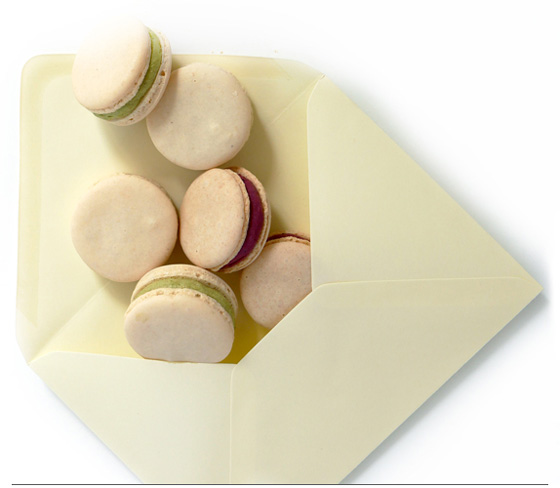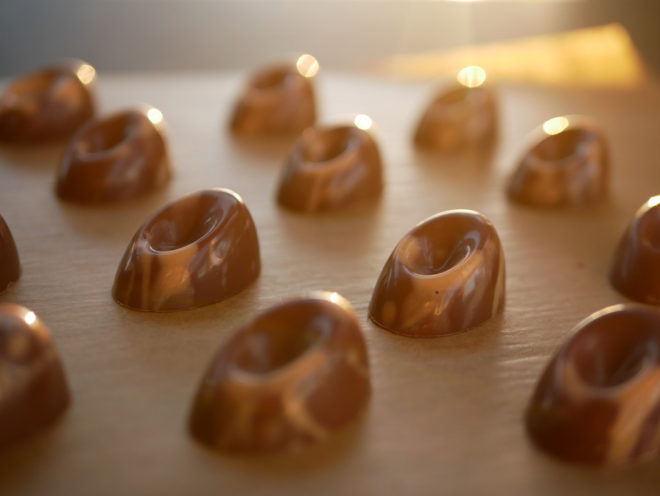Puff Pastry
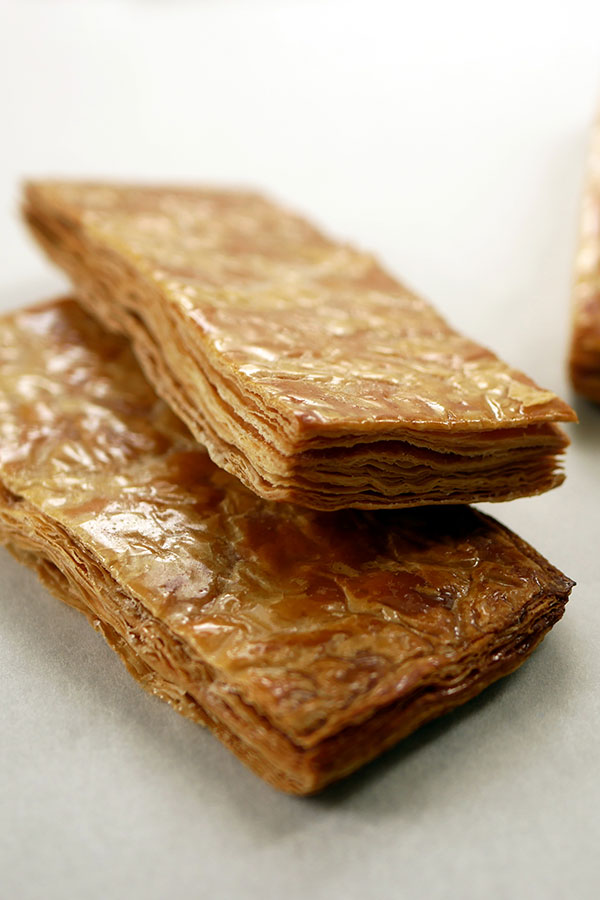
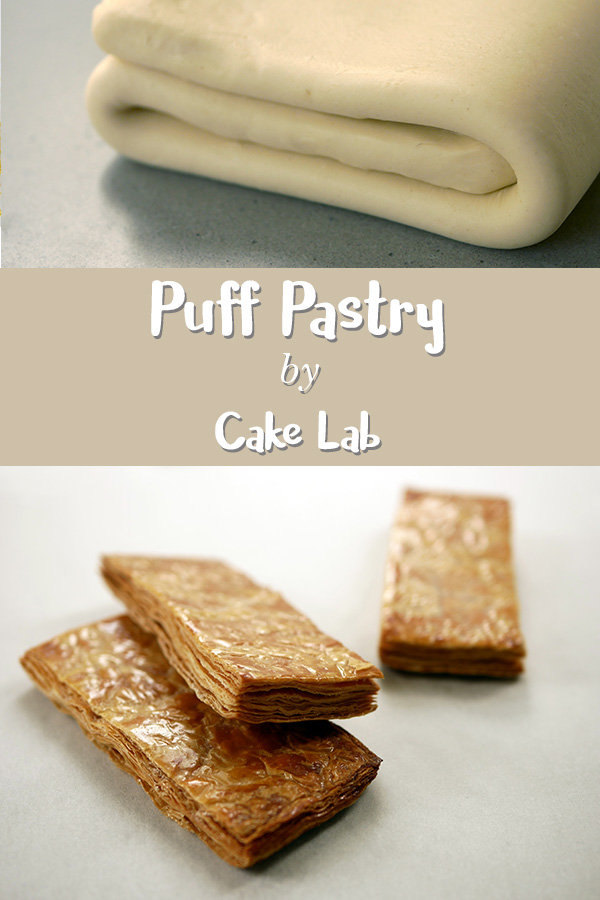
It’s not too complicated to make puff pastry from scratch, as long as you use the right butter. The only downside: it takes a lot of time. A lot of time waiting, not working. From one turn to another, this dough needs to rest in the fridge for a while to cool down. I kinda like it. I use this “resting” time to do the dishes, water the plants, practice some Pilates or just rest up in front of the PlayStation. At the end of the process, you get a kilo of wonderful puff pastry, just like they taught me at pastry school. From here, the journey towards classic French pastries is much shorter. Hello there Mille-Feuille.
Puff pastry is a flaky pastry made out of lots and lots of thin layers, or sheets as they say in France (hence its name, pâte feuilletée). The dough goes through a long process of rolling out and folding in which many layers of dough and butter are created. How many layers? Well, it depends on the number of turns (rolling out + folding).
In this puff pastry recipe, you make 4 turns of 3x4x3x3. In other words, you first roll out the dough and fold it into 3 layers. Then you roll out the dough again and fold into 4 layers, then again into 3 layers and one last time into 3 layers. Do the math, and it’s 217 layers of dough and butter. If you continue and do another turn, you get 649 layers. If you continue and do yet another turn, you would get no less than 1945 layers!
…
Yup, folding is the name of the game. You just flour the working surface, roll out the dough and fold. To survive all these turns, you have to use the right butter. The ideal butter is dry butter. Dry butter is usually European and contains a higher amount of fats – 84% to be precise. Where I live the butter contains 82% fat. Such a small difference, but it’s pretty significant. The consistency of dry butter is more elastic, which makes rolling out and folding the dough so much easier.
I was able to find several proper brands of butter in Jerusalem: Elle & Vire, President, or a Ukrainian butter I found in a Russian store at the Mahane Yehuda market. It worked perfectly even though it has only 82.5% fat. The proper butter should be elastic and relatively soft even when it’s in the fridge. It’s important to note, a butter that is too hard would tear the dough. However, a butter that is too soft would escape the dough.
Another option, which I haven’t tried yet, is to make your own dry butter from regular butter. Take regular butter (82% fat). Warm it up in a microwave in 5 second pulses just until it’s soft. Add 5% flour (or powdered milk) to the butter. Mix well. Flatten the butter and shape it into a rectangle. Keep it in the fridge until use.
Tip: If you substitute 10% of the flour with cocoa powder, you get a cocoa puff pastry.
Please note (!) The work environment has to be cold. Ideally, it’s best to make puff pastry from scratch during winter time. It’s not that simple during hot summer days. However, if it’s hot and you’re looking for a challenge, make sure to turn on the AC on freezing cold and let the dough rest in the fridge for a longer time after each turn. Your puff pastry would appreciate that.
Puff Pastry
Détrempe
250 g cold water
500 g flour
60 g regular butter
2 tsp salt
Butter
250 g high fat butter (see above)
The recipe makes 1 Kg puff pastry
Détrempe
This is the initial form of the dough. Melt the regular butter on low heat just until the butter is melted (be careful not to boil it). Let it cool at room temperature. You have to make sure that the butter is melted and yet lukewarm when you add it to the other ingredients.
Pour cold water into the mixture ball. Add flour, salt and the melted butter. Using the hook attachment, mix on medium speed for about a minute or two until the flour is fully incorporated and the dough starts to become uniform.
Remove dough parts from the bowl and put them on a clean surface. Knead the dough a little just until uniform. The dough won’t look smooth. That’s ok, there’s no need to knead it more. We’re trying not to develop the gluten too much so that the dough will be flaky after baking. The dough will go through additional processing during all the rolling and folding yet to come.
Flatten the dough a little bit. Cover the dough in plastic wrap. Keep in the fridge for at least two hours or even overnight.
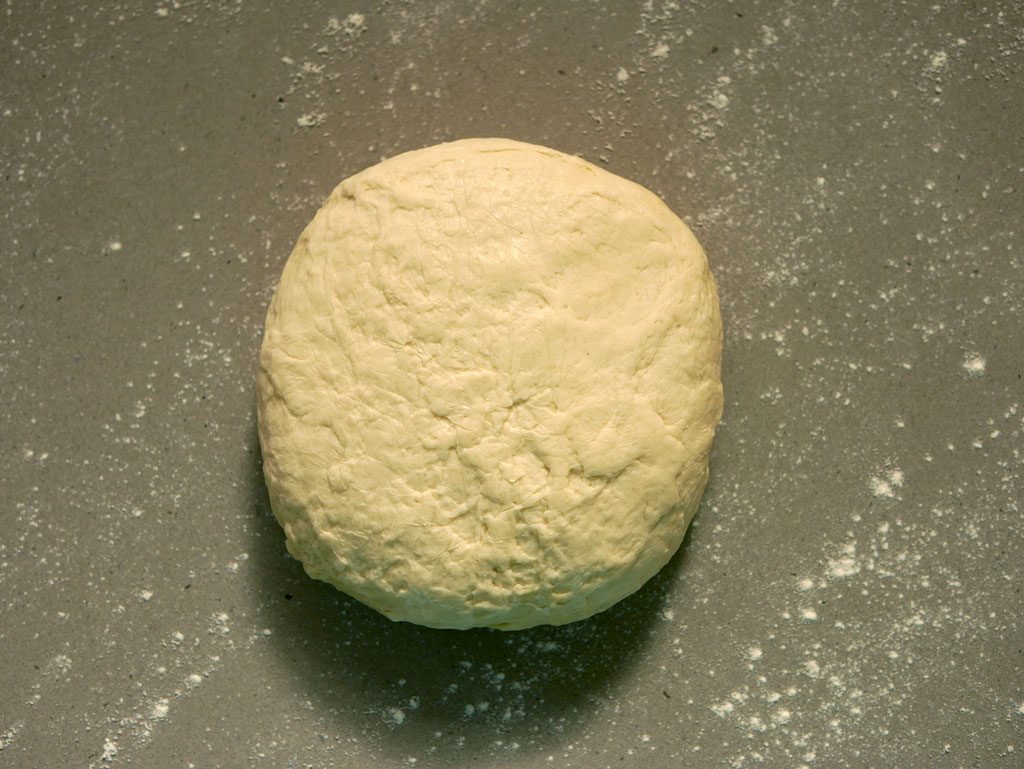
Rolling and folding
Place the butter between two parchment papers and beat with a rolling pin to soften it. Roll out the butter to a 1cm thickness. Try to maintain a rectangular shape while rolling. If you reach the desired thickness but the butter doesn’t have a rectangular shape, cut out the excess butter sticking out and spread it along the sides of the rectangle so it is shaped nicely. Measure the length and width of the rectangle (mine was: 17×18 cm). Keep in the fridge in the meantime.
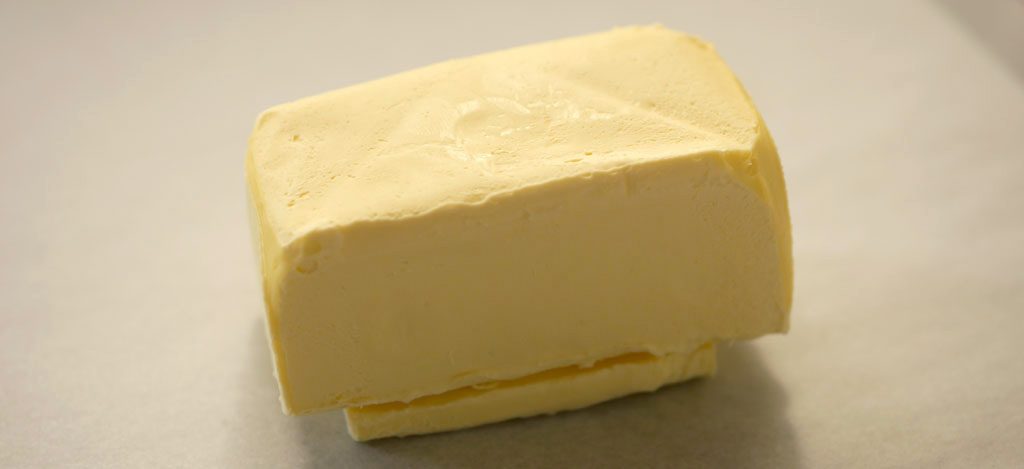

Flour the work surface just a bit (the dough isn’t so sticky, so there’s no need for a lot of flour). Remove the détrempe from the fridge. Remove the plastic wrap around it. Place it on the work surface and roll it out lengthwise. Try to create a rectangle that is twice the size of the butter. (In my case, the length of the butter is 18 cm, so I rolled out the détrempe to 40 cm, which is twice as long plus a little extra so there’s enough for the cover). While rolling, flip the détrempe occasionally.
When you get a rectangle that has the same width as the butter but twice as long, the détrempe is ready. Remove the butter from the fridge and remove the parchment papers around it. Place the butter at the center of the détrempe.
Wrap the détrempe around the butter and close the edges well. The dough in now ready for rolling and folding.

First turn:
Roll out the dough lengthwise to a 1 cm thickness. The dimensions are less critical this time around. It’s important though to keep a rectangular shape while rolling. Always work methodically: roll out the dough up, down, up, down and then flip it. Flour the work surface if needed.
When you reach the desired thickness, do a “three fold”: fold one side on 2/3 of the dough and then fold the rest of the dough on it. This gives you a folded dough with 3 layers. Straighten the margins. Cover in plastic wrap. Keep in the fridge for at least half an hour or even longer during summertime.
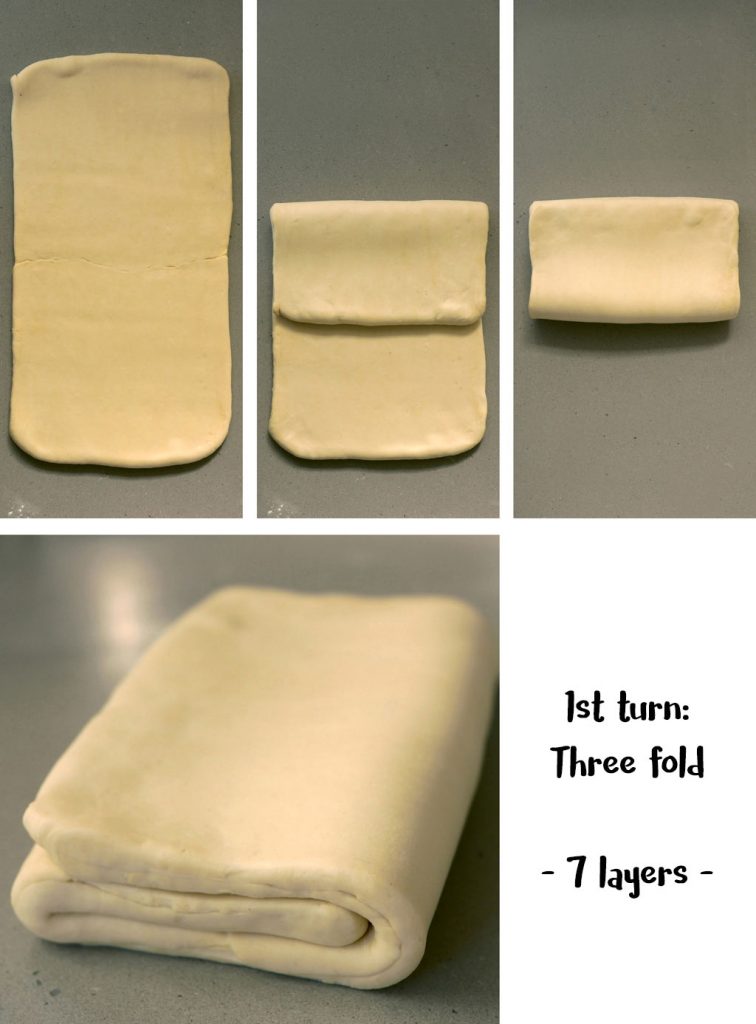
Second turn:
After the dough has chilled in the fridge, flour the work surface just a bit. Place the dough on the work surface. Make sure the long crease (opening) is facing to the right. Roll out the dough again to a 1 cm thickness. Keep a rectangular shape and occasionally flip the dough while rolling.
Do a “book fold”: fold one side on half of the dough and then fold the other side on the other half of the dough. Fold both halves on each other, just like closing a book. This gives you a folded dough with 4 layers. Straighten the margins. Cover in plastic wrap. Keep in the fridge for at least half an hour.
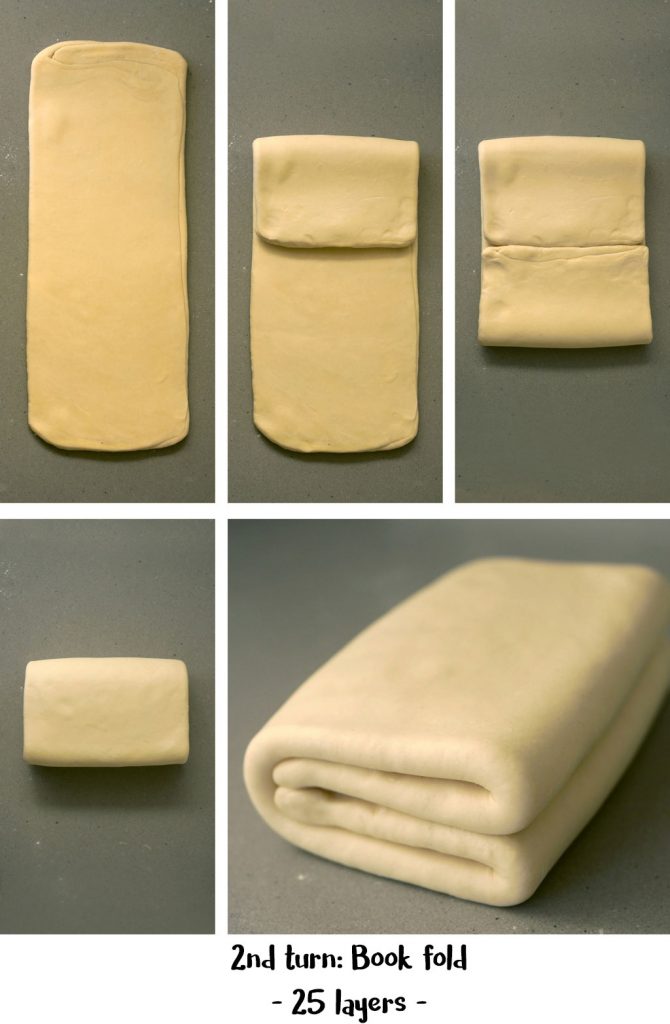
Third turn:
After the dough has chilled in the fridge, flour the work surface just a bit. Place the dough on the work surface. Make sure the long crease (opening) is facing to the right. Roll out the dough again to a 1 cm thickness. Keep a rectangular shape and occasionally flip the dough while rolling.
Once again, do a “three fold”: fold one side on 2/3 of the dough and then fold the rest of the dough on it. Straighten the margins. Cover in plastic wrap. Keep in the fridge for at least half an hour.

Fourth turn:
After the dough has chilled in the fridge, flour the work surface just a bit. Place the dough on the work surface. Make sure the long crease (opening) is facing to the right. Roll out the dough again to a 1 cm thickness. Keep a rectangular shape and occasionally flip the dough while rolling. The dough is very delicate at this stage. You might have to flour the surface of the dough to prevent the rolling pin from sticking to it.
Finally, do a “three fold”: fold one side on 2/3 of the dough and then fold the rest of the dough on it. Straighten the margins. Cover in plastic wrap. Keep in the fridge for at least two hour before use. You may also keep it in the freezer up to two months (defrost it in the fridge). The dough keeps in the fridge for one day only.

Related Posts
Leave a reply:Cancel reply

Search the blog
![]()
Get updates by email
